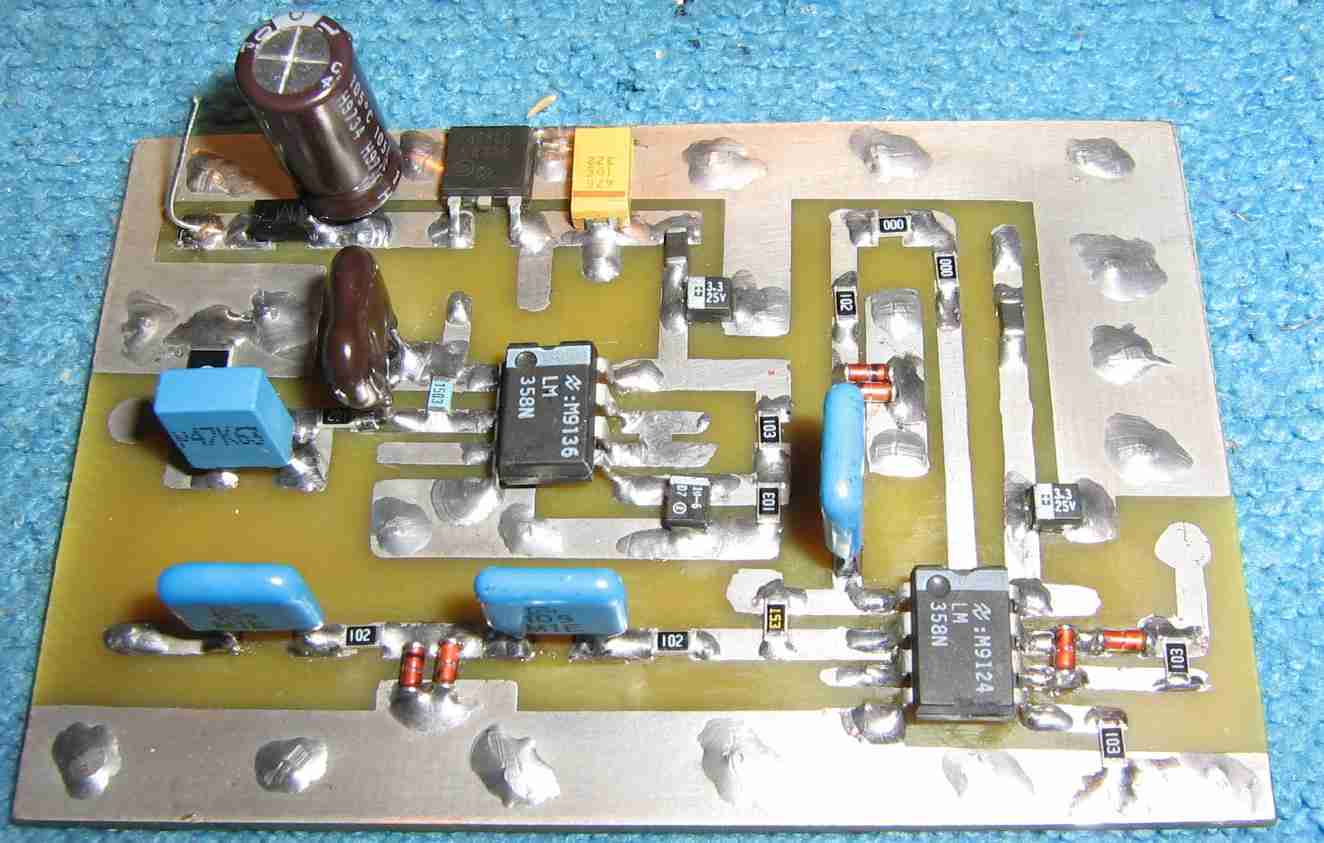
GBPPR JAMCAT Audio Amplifier and Limiter circuit board.
Two LM358 op-amps are used to amplify and limit the input audio signal.
The blue, rounded capacitors are non-polarized 1 µF.
A 1 watt, 10 ohm resistor on the Audio Input acts as a load for the transceiver's speaker output.
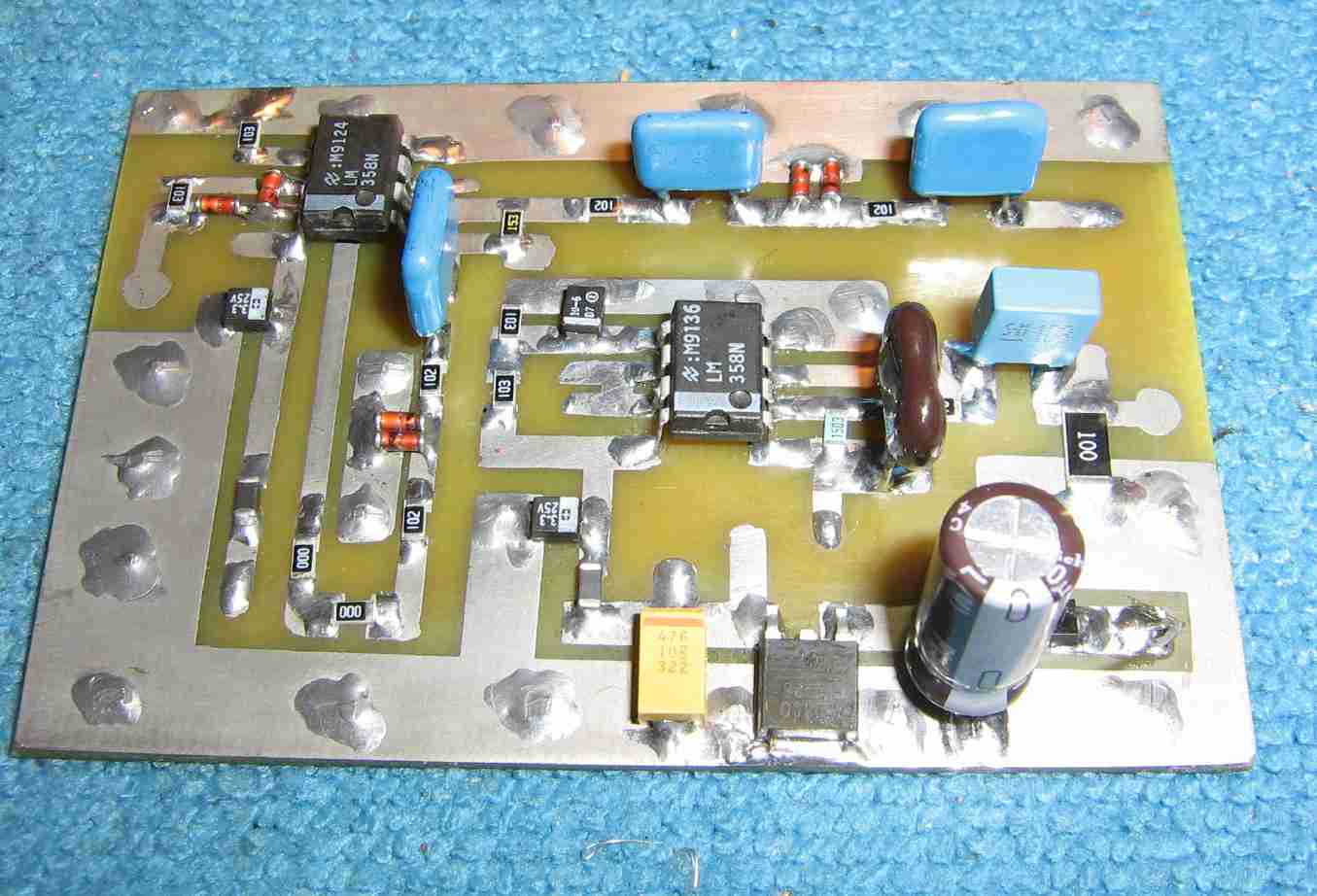
GBPPR JAMCAT Audio Amplifier and Limiter circuit board, alternate overview.
A 78M08 +8 VDC voltage regulator is along the bottom.
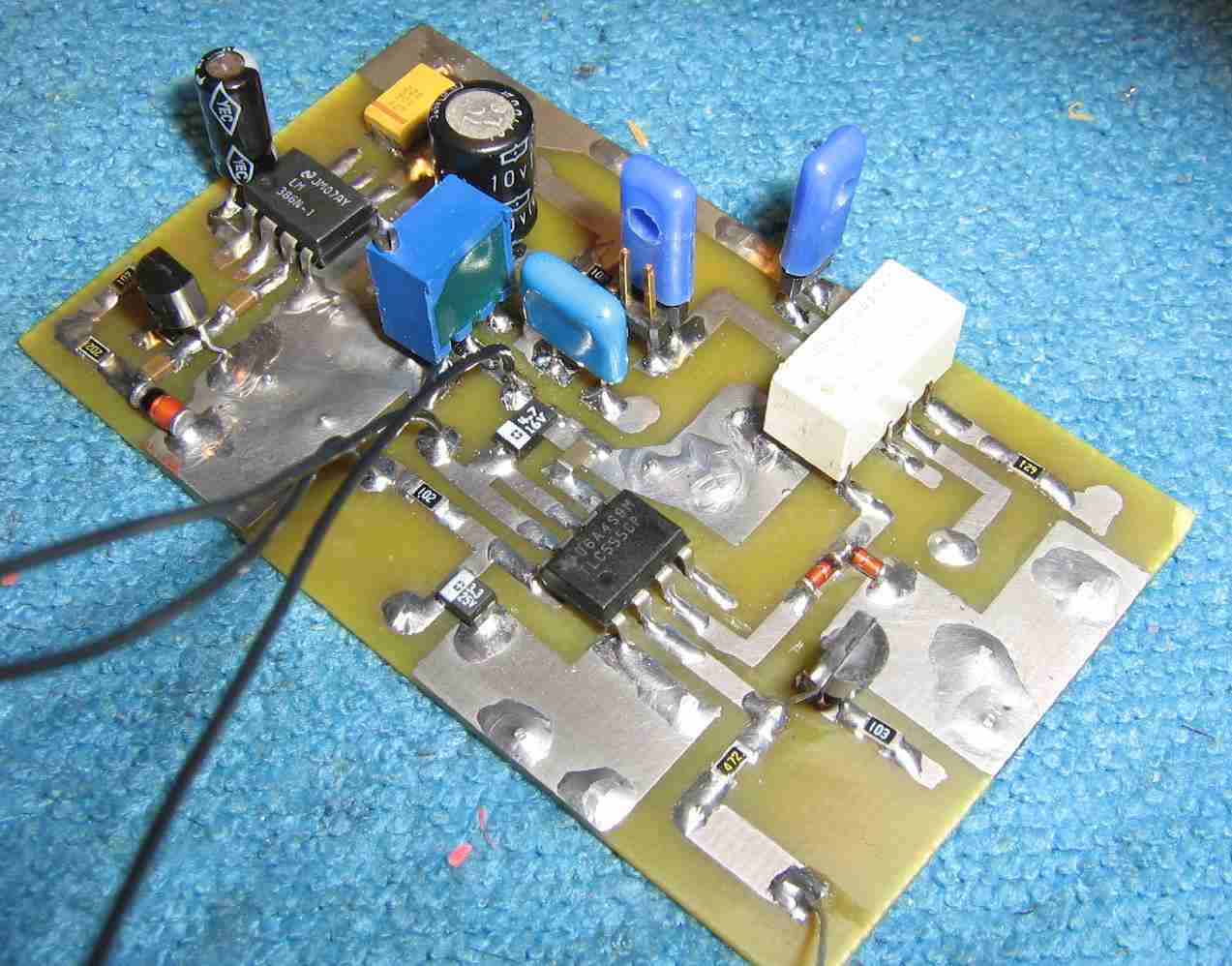
GBPPR JAMCAT Timer and Relay circuit board.
The DPDT relay is the white rectangle device.
The LM386-based noise generator circuit is along the top of the circuit board. The 1N5235 Zener is the orange/black device.
The blue thing with the screw top is the 500 ohm Noise Amplitude potentiometer.
DIP headers where used for experimenting with different PTT control options and are not necessary in the final circuit.
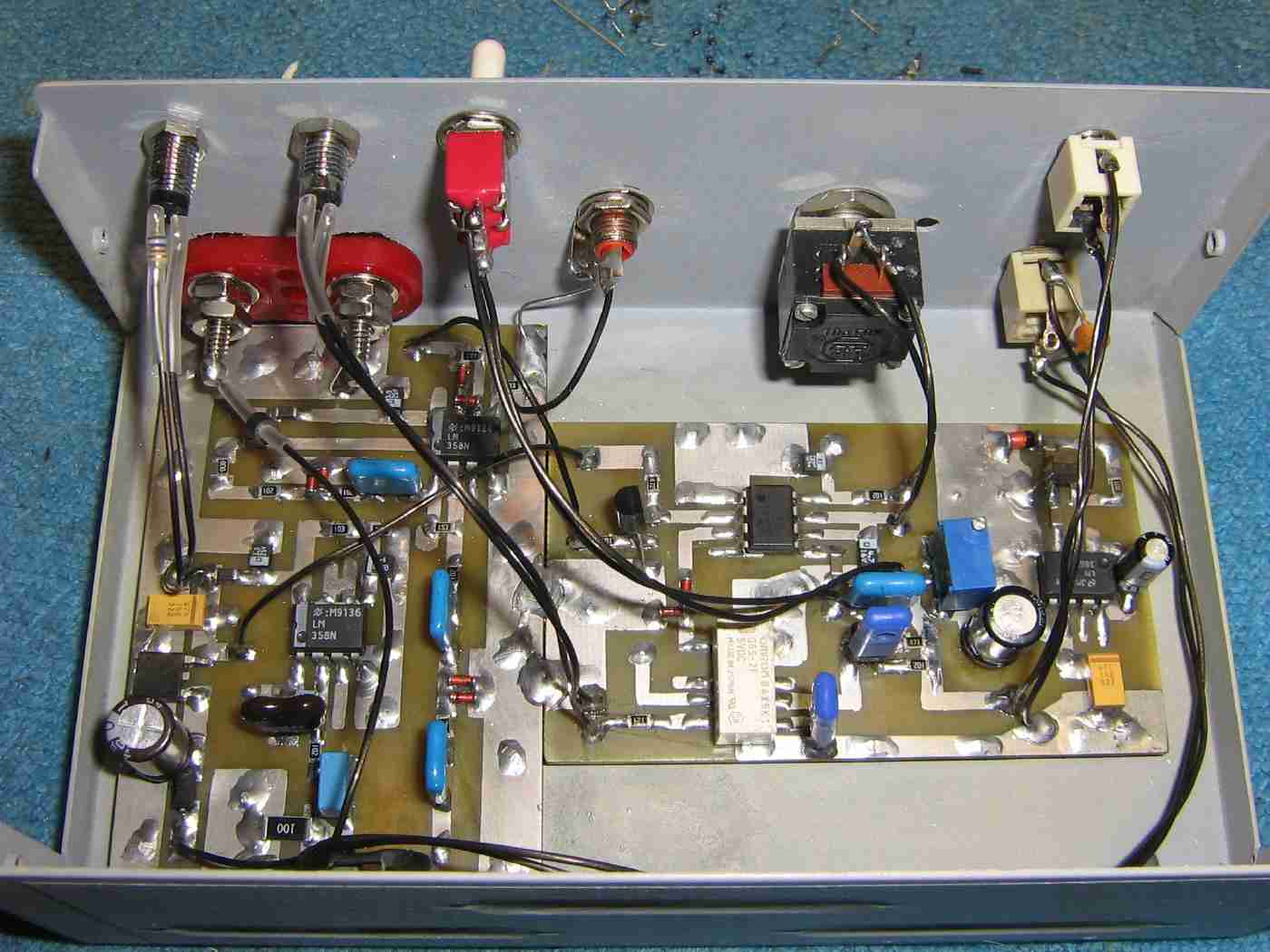
Completed circuit, internal overview.
Mounting the circuit board in an old printer switch case.
+12 VDC power input is via the banana jacks on the upper-left. A power-indicating red LED and the green TX Enable LED are above it.
The Audio Input and PTT Control inputs are along the upper-right.
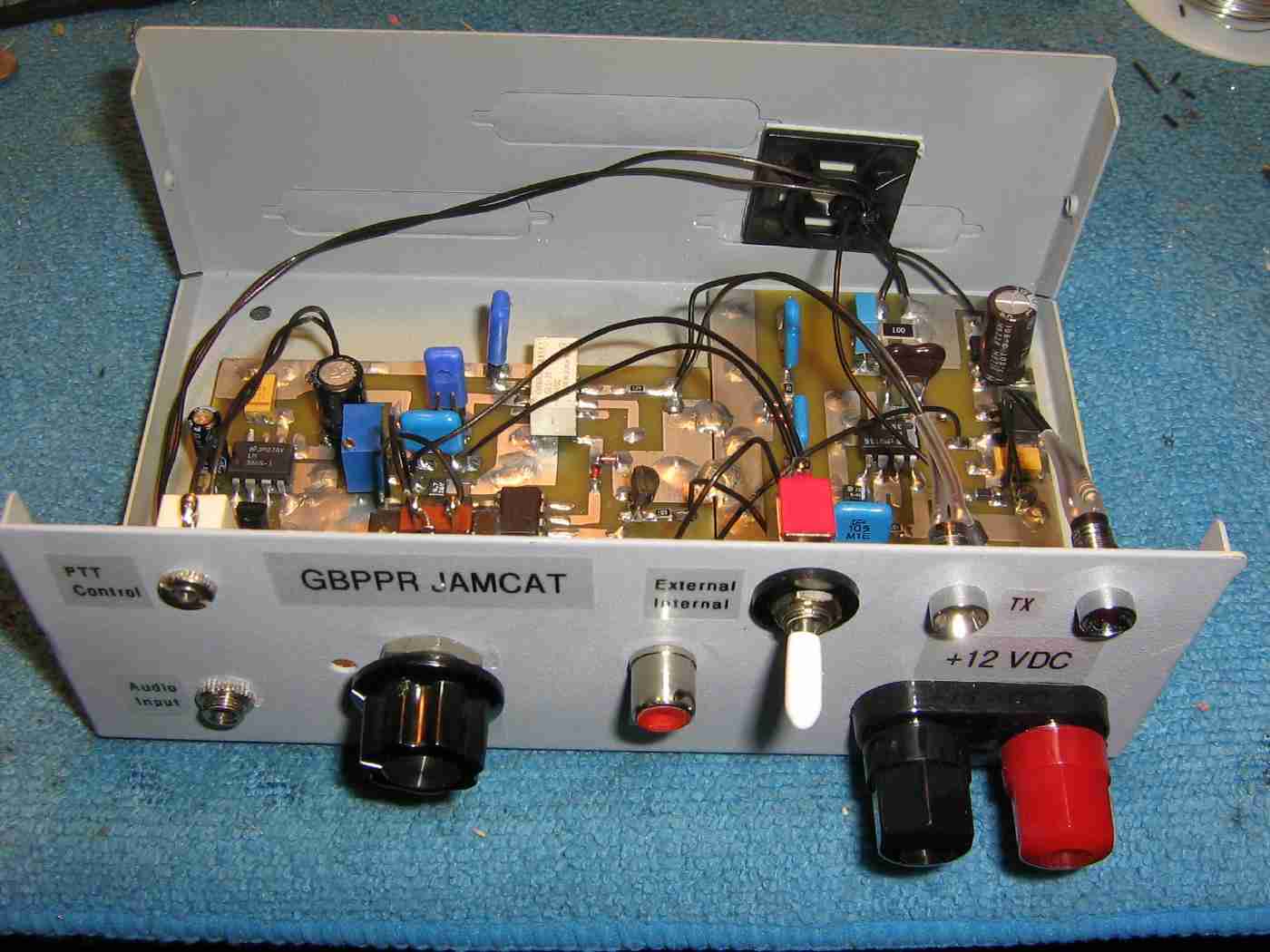
Front-panel overview of the GBPPR JAMCAT.
The green TX Enable and red Power LEDs are panel-mounted on the top-right.
The banana jacks below the LEDs are for the +12 VDC power input. There is no power switch for this device and the current draw is around 80 mA when activated.
The internal/external Modulation Select switch is to the left of the LEDs. This selects between the internal noise generator or the option of using an external modulation source via the panel-mounted RCA phono jack.
The 1 megaohm transmit Delay Time potentiometer is in the center.
The 1/8" mono jack for the low-impedance Audio Input is on the lower-left.
The 3/32" mono jack for the PTT Control is on the upper-left.
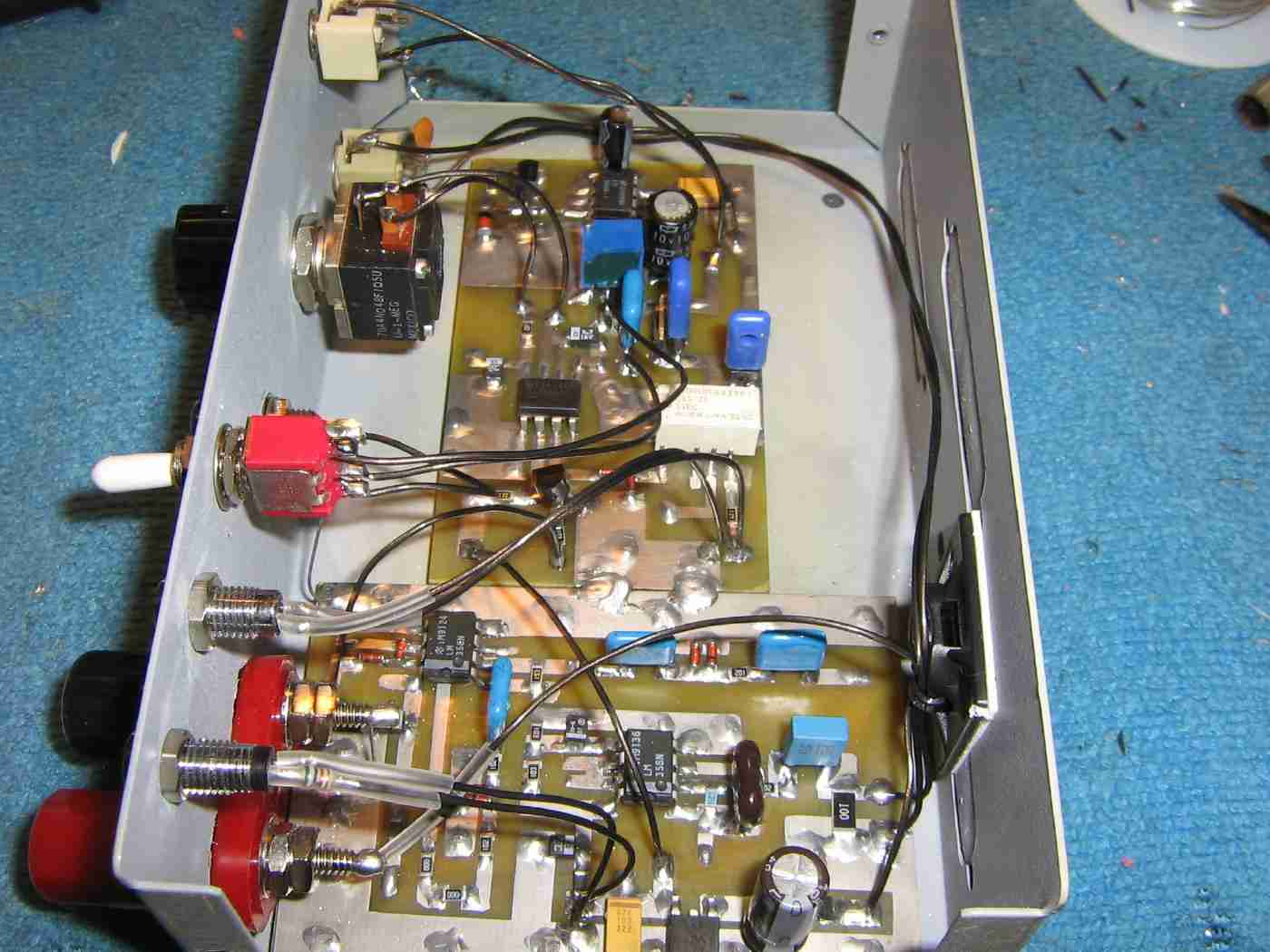
Internal overview.
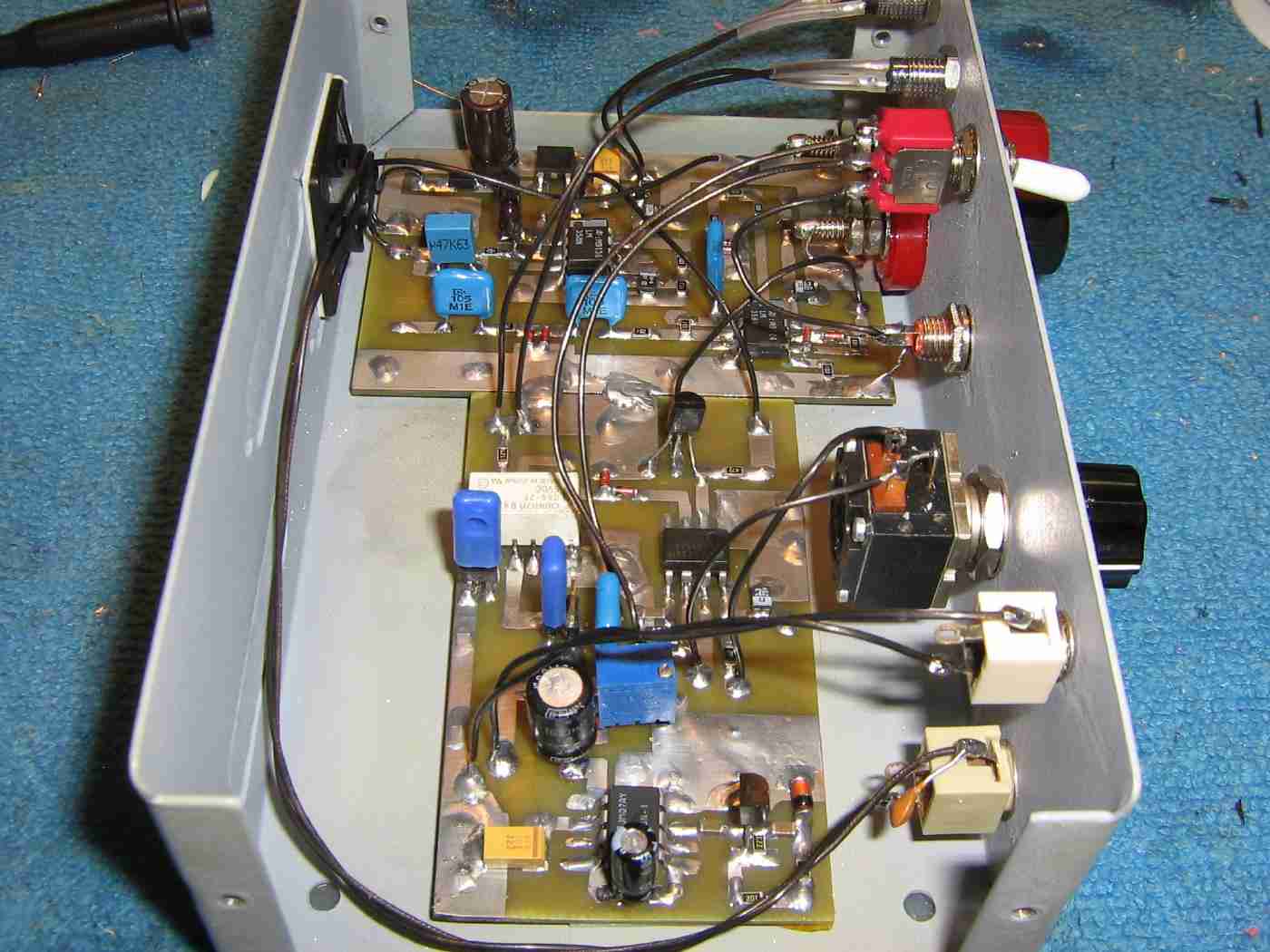
Alternate internal overview.
The 1000 pF capacitor is directly connected to the Audio Input jack.
Keep the lines going to the Delay Time potentiometer as short as possible.
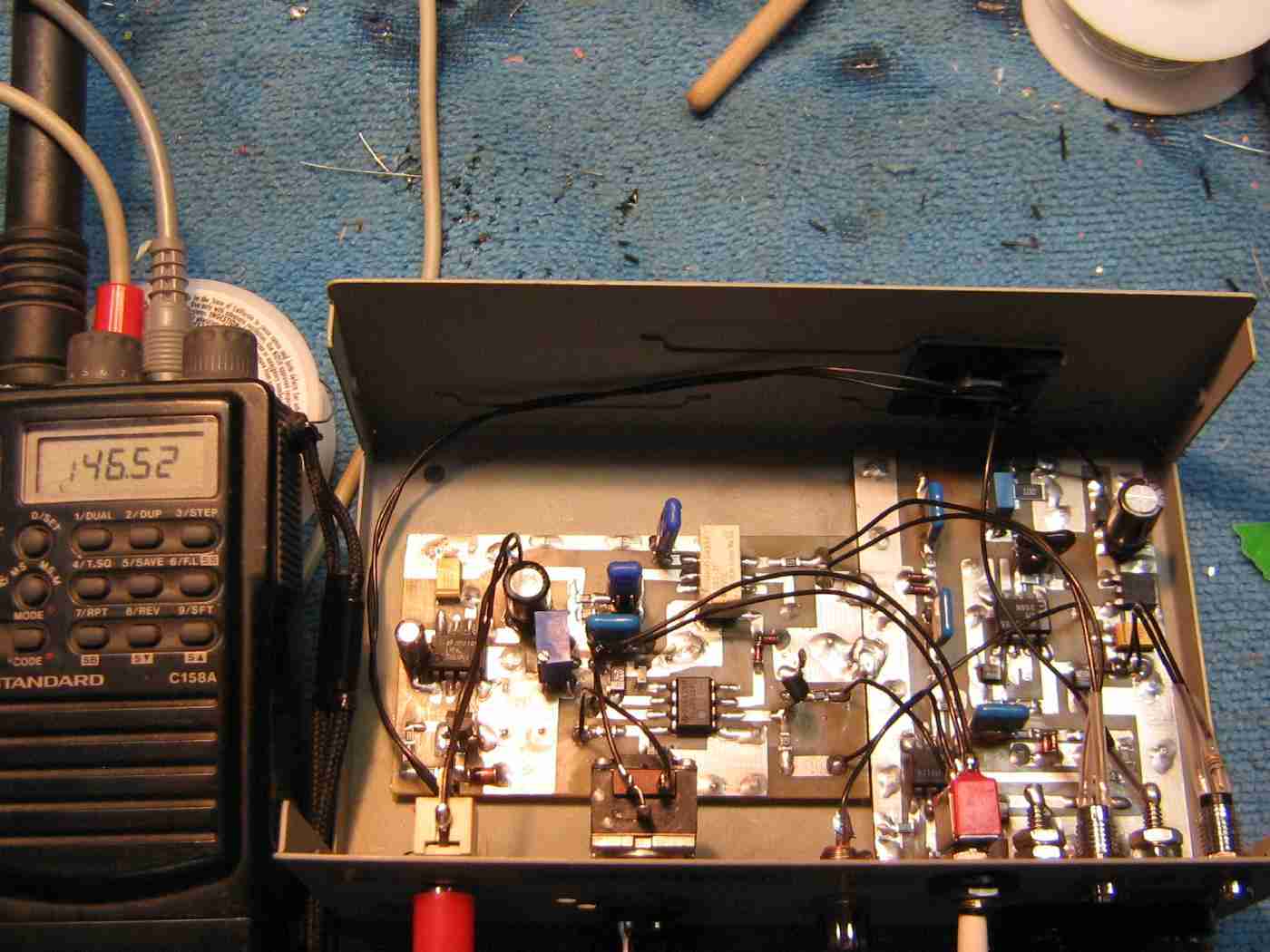
Example jammer setup using the PTT/microphone and earphone/speaker output jacks on a Standard C158A 2-meter amateur radio transceiver.
The Standard C158A's earphone/speaker output is connected to the JAMCAT's Audio Input jack (1/8").
The Standard C158A's PTT/microphone input is connected to the JAMCAT's PTT Control jack (3/32").
This example setup can only jam a single frequency, 146.52 MHz, in this case.
Any detected transmissions on that frequency will cause the C158A to transmit for approximately three seconds, which is controlled via the Delay Time potentiometer.
By using a separate frequency-agile receiver and transmitter, you can "listen" on one frequency and transmit on another!
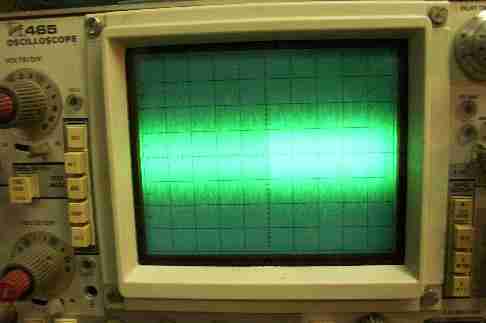
Oscilloscope view of the internal noise generator's output signal.
The oscilloscope's settings are 0.5 V/division (Y) and 10 mS/division (X).
Tune for a noise signal about 1 volt peak-to-peak.
The noise signal's amplitude is adjustable via the 500 ohm Noise Amplitude potentiometer.
The noise generator circuit may break into oscillation or output a very low noise signal. If it does this, adjust the Zener bias resistor (2 kohm) up or down a few hundred ohms while observing the signal (disconnected from the LM386) on an oscilloscope for the maximum noise signal. The LM386 can also oscillate without a good ground and poor power supply bypassing.
Any Zener diode above or equal to 6.2 volts will work in the noise generator as these Zener diodes have an "avalanche" region which generates a tremendous amount of noise when properly biased.